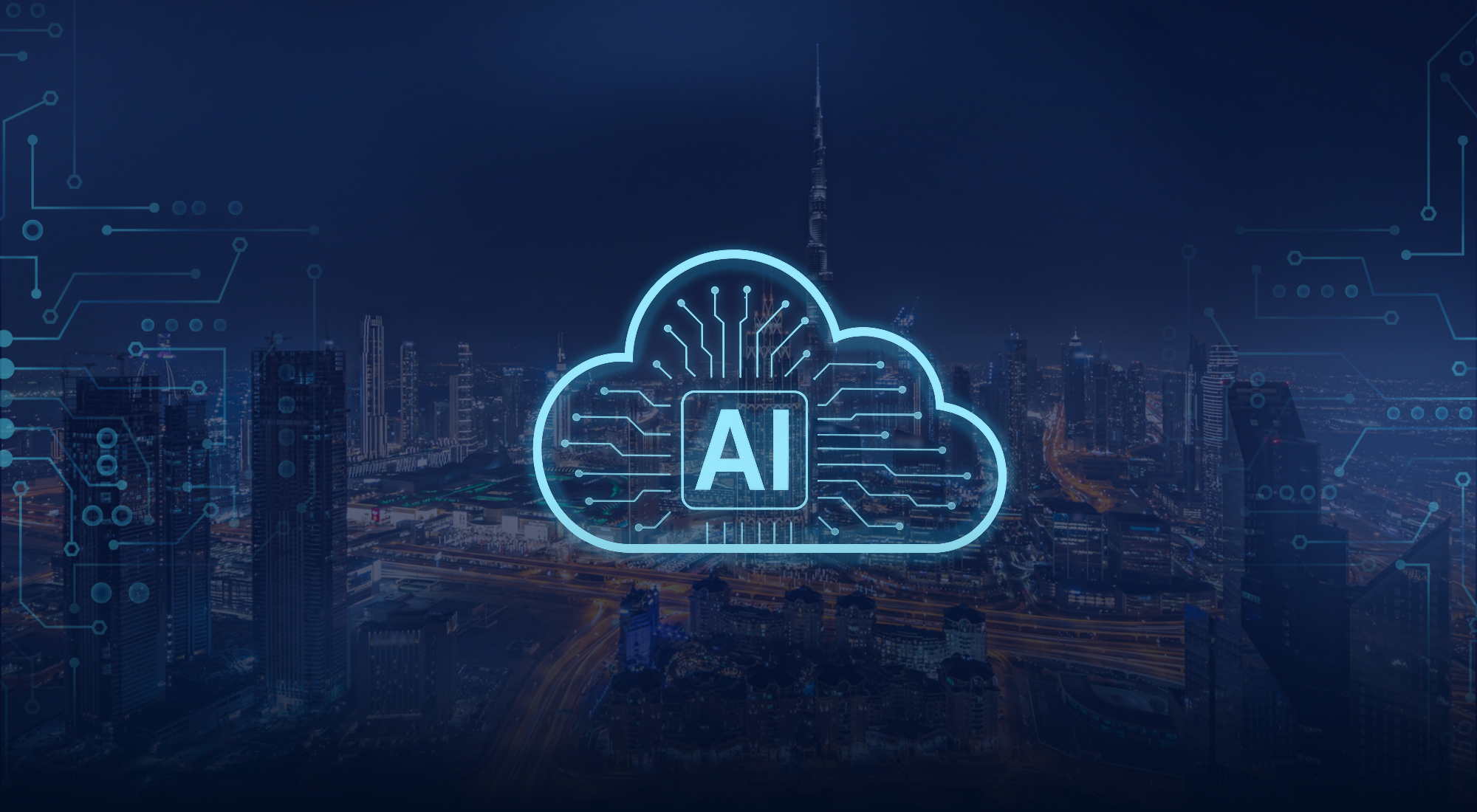1. A Global Perspective on Public and Private Sector Strategies
As artificial intelligence (AI) becomes a transformative force across industries and societies, the scale and structure of investment in AI are reshaping the global technological landscape. Especially since 2022, after the introduction of ChatGPT, the surge of interest and investment in AI has redefined priorities for governments and businesses alike. Nations are unveiling ambitious AI strategies backed by public funding and infrastructure projects, while private investors and tech giants race to capitalize on AI’s transformative potential. It is important to provide a comprehensive global perspective on how both public and private sectors are driving AI forward, with a focus on recent developments in 2023 and 2024. This article examines the dual engines driving AI progress—government-led strategies and private sector investments—from a global perspective.
The research explores how nations such as the United States (U.S.), China, the United Arab Emirates (UAE), and the European Union (EU) are using AI as a tool for economic growth, national security, and digital sovereignty, supported by public funding, infrastructure projects, and policy frameworks. Simultaneously, private sector players—including tech giants, venture capital firms, and non-tech corporations—are pouring resources into AI research, compute infrastructure, and commercialization. The article further analyzes the intersection of public-private initiatives, the rise of sovereign AI funds, and emerging challenges such as the compute arms race, ethical divergence, and global inequity in access to AI. The government strategies and funding for AI, patterns of private sector investment, and the evolving landscape of public-private collaboration are captured. The research also analyzes key emerging challenges, including the global race for computational power, regulatory fragmentation, and disparities in access to AI technologies across regions. Ultimately, it offers a comprehensive look at how capital—both public and private—is shaping not only the capabilities of AI but also the geopolitical and ethical contours of its future.
2. Government-Led AI Strategies Across Regions
Especially as of 2023-2024, the leadership in AI is tied to economic competitiveness and national security. This accelerated government initiatives on AI development and public sectors on national AI strategies, funding research and development (R&D), building infrastructure, and crafting regulations to both harness AI’s benefits and mitigate its risks. From Washington to Riyadh, Brussels to Beijing, main capitals lead these efforts with their public investments and strategic AI plans.
2.1 United States: Federal Initiatives and New Investments
The U.S. entered 2023 with a robust but somewhat fragmented approach to AI—a combination of substantial federal R&D funding, defense-related AI programs, and a light regulatory touch. In 2023, the U.S. National Science Foundation announced to invest US$140 million to found 7 new research institutes, bringing the total to 25 institutes nationwide.[1] These centers aim to drive foundational research in areas like trustworthy and ethical AI, ensuring the U.S. stays at the cutting edge of innovation. In addition to research funding, the federal government made available US$53 billion from the 2022 CHIPS and Science Act into AI-related semiconductor manufacturing and research infrastructure between 2023 and 2027.[2] This includes incentives for domestic production of advanced AI chips and the exploration of a National AI Research Resource, a shared compute cloud for academics and startups, to democratize access to AI capabilities.
U.S. policymakers have also been crafting a strategic vision for safe and responsible AI. In late 2023, the White House issued an Executive Order on Safe, Secure, and Trustworthy AI, covering a comprehensive executive action on AI outlining new standards for AI safety, security, and privacy in both government and industry. This has been the third executive order on AI in the U.S.[3] While the U.S. still lacks a single omnibus AI law, officials have opted for a multi-faceted approach: setting guidelines and relying on sector-specific regulations and voluntary commitments by companies. The Department of Defense and the intelligence community continue to invest heavily in AI for military and cybersecurity applications, and agencies like the Department of Energy are building AI supercomputing facilities for scientific research.[4] The cumulative effect is substantial public spending: U.S. federal R&D outlays on AI reached into the billions annually, reinforcing the country’s long-term position in AI. As we will see, these government efforts complement an even larger wave of private investment in the U.S., creating a powerful public-private ecosystem.
2.2 Saudi Arabia: Vision 2030 and AI as a National Priority
Saudi Arabia has emerged as a bold new player on the global AI stage. Under its Vision 2030 economic diversification plan, the Kingdom is pouring resources into AI with the explicit goal of becoming a world leader in the field. In 2020, Saudi Arabia established the Saudi Data & AI Authority (SDAIA) and unveiled a National Strategy for Data & AI, setting the tone for the decade.[5] By 2023-2024, these plans translated into significant investments in infrastructure and partnerships. Saudi Arabia’s government has partnered with NVIDIA and AMD to build AI factories, large-scale AI supercomputing hubs, aiming to propel the country into the ranks of global hyperscalers.[6] A new entity called HUMAIN, a subsidiary of the Public Investment Fund (PIF), is investing to create up to 500 megawatts of AI computing capacity powered by hundreds of thousands of NVIDIA’s cutting-edge GPUs over the next five years.[7] The first phase includes an 18,000-GPU supercomputer, which would instantly put Saudi Arabia on the map for high-end AI infrastructure.
Moreover, SDAIA is deploying 5,000 top-tier GPUs to build a “sovereign AI cloud” for government and smart-city applications. These efforts, coupled with training programs for Saudi engineers and collaborations to develop local AI solutions, show a comprehensive strategy: build infrastructure, grow human capital, and attract global talent. Saudi officials predict AI will contribute up to 12% of national GDP by 2030, reflecting optimism about AI’s economic impact.[8] Notably, Saudi Arabia is leveraging its substantial sovereign wealth to fund these initiatives. While building domestic capabilities, Saudi Arabia also does not shy away from tapping foreign expertise: it regularly hosts global AI summits in Riyadh and has forged partnerships with international tech companies such as a joint venture with Chinese SenseTime, Huawei cloud’s AI initiatives. Huawei is also building the world’s largest microgrid energy storage project in Saudi Arabia with 1.3 GWh.[9] Furthermore, Google has signed an agreement with the PIF to develop an AI hub as well.[10] These developments are intensifying regional competition while creating new opportunities for global technology companies to enter and expand in the market.
2.3 European Union: Coordinated Strategy, Funding, and Regulation
The EU has also been treating AI as both an opportunity for innovation and an area requiring careful regulation. In 2023 and 2024, the EU doubled down on its coordinated AI strategy. Brussels is backing AI through major funding programs: the EU’s Horizon Europe and Digital Europe initiatives together invest roughly €2 billion per year in AI research, startups, and infrastructure.[11] In late 2024, EU leaders went further by unveiling an “AI Continent” action plan to mobilize €200 billion over five years, combining €50 billion in public funding with €150 billion in anticipated private sector investments.[12] A key component of the plan is the creation of AI “gigafactories” in Europe—four large-scale AI data centers supported by a dedicated €20 billion fund. Each of these facilities will house around 100,000 high-end AI chips, providing researchers and companies with access to world-class compute resources. By upgrading supercomputers and building new ones optimized for AI, the EU aims to ensure its innovators can compete without being handicapped by a lack of infrastructure.
In parallel, the EU moved to establish a comprehensive regulatory framework. By the end of 2023, EU institutions reached a political agreement on the EU AI Act, a landmark law that will impose binding rules on AI systems, especially general-purpose AI and high-risk applications as of 2024-2025.[13] Individual European countries continue to invest on their own as well: France, for instance, announced billions of euros to support AI research and startups, and Germany has launched its AI strategy update with increased funding for AI research centers. The UK, while no longer in the EU, set aside £900 million for a new AI compute facility as of 2023.[14] Europe’s overall approach blends funding with rules: enabling AI development through significant investments while also shaping its trajectory via regulation to reflect “European values” like privacy, safety, and accountability.
2.4 Broader Middle East: Gulf Ambitions and Regional Strategies
Beyond Saudi Arabia, especially the Gulf states in the Middle East are rapidly adopting AI to drive economic diversification. The UAE, a regional frontrunner, established the world’s first Ministry of AI in 2017 and aims to lead globally by 2031. In 2023, Abu Dhabi’s G42 launched a US$10 billion government-backed fund for global AI investments, while UAE researchers released “Falcon,” a bilingual open-source large language model (LLM), showcasing the country’s ambition to build homegrown AI capabilities.[15] The UAE is also developing a new AI Campus and one of the region’s largest AI research and chip design centers, following a recent agreement to deepen AI collaboration with the U.S. during the latest high-level visit by President Donald Trump to the Middle East. These moves align with the UAE’s broader strategy of becoming a tech and innovation hub. Nearby, Qatar and Israel have their own AI programs: Qatar is investing in AI through education and its sovereign fund. Qatar has partnered with companies like Microsoft to establish local cloud AI services, while Israel, with one of the highest concentrations of AI talent, is channeling military and academic R&D into a thriving AI startup ecosystem.
Elsewhere in the Middle East, countries like Egypt, Jordan, and Oman have begun drafting or updating national AI strategies to apply AI in sectors such as education, agriculture, and smart cities. Egypt, for example, unveiled an updated AI Strategy 2025-2030 aimed at positioning itself as a regional AI hub. AI is helping modernize government services across the Gulf; governments are adopting AI for e-government and smart infrastructure and creating new industries beyond oil and gas. At the same time, Middle Eastern nations are attentive to the need for skills development; countries are investing in AI education and talent attraction, as Saudi Arabia has begun offering special visas to AI professionals. While these nations cannot yet rival the U.S. or China in absolute investment, their strategic deployments of capital, combined with agile policymaking, are carving out a place in the global AI landscape.
2.5 Asia: China’s AI Superpower Quest and Regional Efforts
The government-led strategy for AI in China is leading the region’s AI adoption and development efforts from as early as 2017 through state-backed investments and plans. Comparatively, venture investments in AI in China were on the order of US$9 billion, a distant second to the U.S.’s US$109 billion as of 2024.[16] However, the Chinese government compensates through direct spending and policy support. For instance, China’s New Generation AI Plan coordinates efforts across ministries and allocates funding for AI research in fields like computer vision, natural language processing, and intelligent manufacturing. Major Chinese cities (Beijing, Shanghai, and Shenzhen) have each set up multi-billion-dollar AI innovation funds and incentives to attract companies and talent.
One area of focus is AI infrastructure. In response to U.S. export controls on advanced AI chips, China has accelerated funding for its domestic semiconductor industry and high-performance computing facilities. Despite progress by companies like Huawei in developing AI chips, China still struggles to meet up with local demand. In terms of governance, China introduced new regulations in 2023 requiring licenses for generative AI services underscoring an emphasis on control alongside innovation.
Beyond China, other Asian countries like India, for example, launched a National AI Strategy and in 2023 announced the creation of several Centers of Excellence in AI, partnering with tech firms to apply AI in areas like healthcare and agriculture. India’s tech giants, such as Tata Consultancy Services, Infosys, and Reliance Jio, have started integrating AI solutions, and there’s a growing startup scene in AI. However, India’s overall AI in both public and private investment remains more modest. Japan, known for robotics, is injecting funds into AI chip development and supercomputers. Japanese corporations such as SoftBank have been major global investors in AI. South Korea, not to be left behind, is investing in AI hubs and leveraging companies like Samsung for AI chips and memory and Naver, which has its own LLM to drive innovation. Across Asia, while approaches differ, the common recognition is that AI capabilities will be vital to future economic and strategic strength, prompting active government involvement either as an investor, regulator, or orchestrator of national efforts.
3. Private Sector Investments and Industry Adoption
While governments set the stage, the private sector has been the primary engine of AI’s rapid advancement, especially in the last two years. Tech companies large and small, venture capitalists, and even traditional industries’ investment in AI broke record after record, driven by fierce competition and the success of new AI applications.
3.1 Tech Giants Betting Big on AI
In the corporate world, an “AI arms race” took hold among the largest tech firms. In the U.S., companies like Microsoft, Google, Amazon, Meta, and Apple collectively spent tens of billions of dollars in 2023-24 to strengthen their AI capabilities. Microsoft notably extended its partnership with OpenAI, investing approximately US$10 billion more and integrating OpenAI’s GPT models into its products, from search tools to office programs.[17] Google reorganized its AI efforts by merging its DeepMind lab with Google Brain, doubled down on AI-first research, and introduced generative AI features across email and cloud services. Meta open-sourced its LLaMA language model and later released Llama 2 in partnership with Microsoft, aiming to democratize AI and challenge competitors. Amazon Web Services, the largest cloud provider, entered a strategic deal, investing US$8 billion in Anthropic in total, a leading AI startup.[18]
China’s tech giants mirrored this trend. Baidu, often dubbed the “Google of China,” released Ernie Bot, a Chinese-language rival to ChatGPT and is investing heavily in AI chips and cloud services for AI. Tencent and Alibaba each announced their own foundation models in 2023 and are embedding AI into fintech, e-commerce, and social media offerings. These companies are also significant investors in AI startups and research globally. NVIDIA, though U.S.-headquartered, led by a Taiwanese-American CEO and with global operations, became one of the world’s most valuable companies in 2023 due to its dominance in AI hardware where its GPU chips power the vast majority of AI models. In sum, global tech leaders have treated AI development not just as R&D but as core to their corporate strategy by acquiring AI startups, hiring top talent, and building massive computing infrastructure. Only a few years ago, training an AI model might cost a few million dollars; by 2023, training frontier models like GPT-4 was estimated to require tens of millions of dollars and specialized hardware, a commitment only the largest players can readily afford, with some exceptions like DeepSeek. It is possible to reach cost efficiency with innovative solutions such as through a mixture-of-experts architecture. DeepSeek activates only a small subset of parameters during each operation to achieve this, an approach that significantly reduces the required computing power while maintaining high performance.[19]
Venture Capital and the Startup Ecosystem
After a slight dip in 2022, venture capital funding for AI roared back in 2023 and hit new heights in 2024. Investors worldwide chased the “next OpenAI” with enthusiasm reminiscent of the dot-com era. Global private investment in AI startups reached roughly US$86 billion in 2023 and then an astonishing US$131.5 billion in 2024—a 52% year-over-year.[20] By 2024, AI-related deals comprised over one-third of all venture funding by value. The U.S. has attracted by far the most AI funding, at an estimated US$471 billion, with U.S. investors alone raising US$109 billion in 2024. China is a distant second at US$119 billion, followed by the UK at US$28 billion.[21]
The venture frenzy has also led to the creation of many specialized AI funds and the entry of non-traditional investors. This dynamic is playing out in AI: from autonomous vehicle software to AI drug discovery to AI-assisted education platforms, startups in almost every sector are pitching themselves as “AI companies” to tap into investor enthusiasm. In the U.S., for instance, while the total number of VC deals fell in 2024, the total amount rose. This is a remarkable concentration of investment, underscoring the belief that AI is not just another tech trend but possibly the defining technological revolution of the coming decade.
3.2 AI Adoption Across Industries
Beyond the realm of tech startups and research labs, AI has been steadily permeating traditional industries. Companies in sectors from finance to healthcare to manufacturing have started to implement AI solutions to improve efficiency, gain insights, and develop new services.
In financial services, banks and insurers are deploying AI for everything from fraud detection and algorithmic trading to customer service chatbots. For example, JPMorgan created an in-house generative AI system to assist its bankers, and Goldman Sachs is using AI to automate parts of its workflow. Many firms are also experimenting with LLMs to analyze market data or client queries. In healthcare, AI-powered diagnostic tools like image recognition systems that can flag anomalies in X-rays or MRIs are undergoing trials, and pharmaceutical companies are investing in AI-driven drug discovery platforms to identify new compounds faster. The year 2023 saw breakthroughs like AI models predicting protein folding and numerous collaborations between biotech startups and large pharma companies to utilize AI in R&D.
The manufacturing and energy sectors are harnessing AI for predictive maintenance, optimizing supply chains, and even for design via generative algorithms. Retail and consumer goods companies leverage AI for demand forecasting, inventory management, and personalized marketing retailers analyze purchasing data with AI to optimize stock levels and tailor recommendations to customers. In agriculture, AI-driven drones and sensors help monitor crop health and guide precision farming practices. Governments themselves, as significant service providers, are adopting AI for smart city initiatives, traffic management, and automating routine administrative tasks. That said, concerns remain about job displacement in the long run, and some industries, like education or legal services, are treading carefully, balancing efficiency with ethics and accuracy. Overall, the private sector’s embrace of AI across both tech and non-tech domains indicates that AI is increasingly seen not as a speculative bet but as a core component of business strategy.
4. Public-Private Synergies and National Innovation Ecosystems
The interplay between public initiatives and private enterprise is a crucial factor in AI advancement. In many cases, the most impactful AI projects emerge from public-private partnerships that leverage government support and private sector innovation.
4.1 Sovereign Wealth Funds and Big Capital Moves
Sovereign wealth funds are emerging as major AI investors, blending public and private capital. Funds like Saudi Arabia’s PIF, Abu Dhabi’s Mubadala, ADQ, and G42 are backing AI and semiconductor firms globally, viewing AI as both a strategic and high-return asset. Qatar’s fund is eyeing AI and fintech, while Singapore’s Temasek and GIC are increasing their AI exposure. These funds often pair investment with local benefits, such as requiring talent development or office setups in their home countries.
In Western economies, while the term “sovereign fund” is not always used, government-backed funds are playing a role too. The EU’s new InvestAI program, essentially a public-private fund-of-funds, is aimed at channeling billions into European AI startups and scale-ups. France’s Bpifrance, a state investment bank, has an AI-focused fund, and Germany’s public investment banks co-invest in tech. Even the U.S., which historically leaned on private venture capital, has seen discussions of a federal AI fund, even though most U.S. public support still comes via grants or contracts rather than equity investment.
These sovereign and public funds bring a long-term perspective that can be beneficial for AI, where the payoff might take years. They also can underwrite large infrastructure projects that the private sector alone might shy away from, such as when AMD’s US$10 billion partnership with Saudi Arabia in 2023 to develop chips and software for AI data centers.[22] Another facet of public-private synergy is the creation of shared infrastructure accessible to startups and researchers. The EU’s AI factories, mentioned earlier, explicitly seek to allow SMEs and academics to use supercomputing resources so that innovation is not limited to tech giants.
5. Emerging Challenges in the Global AI Landscape
Amid the exuberance of AI’s rapid advancement, several critical challenges have come to the forefront. These challenges are not just technical; they are geopolitical, ethical, and socio-economic.
5.1 The “Compute” Arms Race
Modern AI breakthroughs, especially in deep learning, are increasingly fueled by enormous computing power. Training state-of-the-art AI models requires tens of thousands of specialized chips and vast amounts of electricity. This has spurred what can be termed an international “compute arms race,” where nations and companies vie for supremacy in advanced computational infrastructure. Firstly, only a handful of players currently control the majority of high-end AI compute capacity. The U.S., home to firms like OpenAI, Google, and Microsoft, currently leads by a wide margin. As of late 2024, the U.S. had 172 and China officially had only 63 systems of the world’s 500 most powerful supercomputers.[23]
Secondly, there is a corporate compute race: big tech companies are in an arms race with each other to build the most capable AI cloud infrastructure. Amazon, Microsoft, and Google are each expanding their cloud data centers globally and designing custom AI chips to reduce reliance on third-party providers. Meanwhile, startups and less-resourced companies worry about “compute divide” that if only the tech giants can afford to train the most powerful models, then innovation might stagnate or concentrate.
This compute arms race raises issues of efficiency and environment as well. Training giant AI models consumes vast energy. As every player seeks to outdo others with bigger models, the energy footprint of AI is ballooning. The challenge for the global community will be ensuring this race does not lead to monopolization of AI by a few actors or a wasteful duplication of efforts and that it remains a healthy competition driving progress rather than a zero-sum conflict.
5.2 Ethical and Regulatory Divergence
As AI technology gallops ahead, governments around the world are grappling with how to regulate it. The past two years have seen a divergence in regulatory philosophies, raising the prospect of a fragmented global regulatory environment for AI. On one end, there are jurisdictions like the EU and China that have moved quickly to establish AI rules, and on the other, places like the U.S. that so far rely on a patchwork of measures rather than sweeping regulation.
The EU’s AI Act is the most comprehensive framework to date. It takes a risk-based approach, categorizing AI uses from minimal risk to unacceptable risk, and imposes requirements accordingly, such as transparency for chatbots, human oversight for high-risk systems like those in healthcare or legal, and an outright ban on certain harmful uses like social scoring. If implemented, any AI system entering the EU market will have to comply, effectively making the EU a regulatory trendsetter, much as it did with data privacy via the General Data Protection Regulation (GDPR). In China, AI regulation is strict and centralized. In 2023, Beijing required companies to register generative AI models, align outputs with state ideology, and label AI-generated content. In contrast, the U.S. has taken a more hands-off, innovation-focused approach. As of 2025, there is no national AI law, while some states have started passing their own rules, creating a patchwork of regulations.
A pressing challenge on the global stage is the risk that AI’s benefits, such as economic growth, improved services, and new opportunities may not be equitably distributed. Just as previous technological revolutions sometimes widened the gap between the haves and have-nots, the AI revolution could exacerbate both international and intra-national inequalities if not addressed. Job displacement and labor dynamics add another layer. Advanced economies might see more jobs disrupted by AI, but they also have more means to retrain and cushion workers. Automation might erode their competitive advantage in labor-intensive industries. AI-driven robots in textile factories could reduce the need for apparel outsourcing to countries like Bangladesh and yet these countries lack the funds and systems to retrain millions of displaced workers.
Addressing these inequities requires deliberate policy choices. International bodies like the UN and the World Bank have started discussing an “AI divide” like the digital divide and pooling medical AI research globally so that poorer nations can benefit from rich-world innovation in healthcare AI. To ensure AI advances benefit all, global cooperation and inclusive policy frameworks are essential to bridge emerging divides and prevent deepening inequality.
Conclusion and Outlook
The global surge in AI investment over the past two years underscores a defining reality and is becoming a central pillar of economic and strategic competition. Governments from Washington to Riyadh and Beijing to Brussels, are treating AI development as a matter of national priority, pouring funds into research labs, data centers, and education. Simultaneously, private enterprises, from nimble startups to trillion-dollar tech conglomerates, are driving innovation, enabled by unprecedented flows of venture capital and the relentless progress of computational power. This blend of public ambition and private ingenuity has accelerated AI at a pace few imagined, bringing the once-hazy future of autonomous systems, intelligent assistants, and advanced analytics into the present.
The next phase of the AI journey is likely to be even more consequential. For business leaders and investors, the landscape offers immense opportunities, new markets, efficiency gains, and the ability to handle the very real possibility of AI disruption to their own business models. Public-private collaboration will remain key, whether it is developing safe AI governance (companies and governments agreeing on safety test protocols), co-investing in critical infrastructure (like national AI clouds or global compute networks for research), or jointly tackling societal challenges (using AI for climate modeling or disease prediction).
As the trend of deglobalization reshapes global priorities, investment in AI is no longer just a matter of open exchange across borders—it is increasingly shaped by national security concerns, data sovereignty, and social welfare agendas. While the phrase “whoever builds the best AI, wins” may be reductive, it reflects the growing strategic importance of AI in a world where public funding and social protection priorities may begin to outweigh more diverse or globally distributed investment structures.
[1] US National Science Foundation, “NSF announces 7 new National Artificial Intelligence Research Institutes,” 2023, https://www.nsf.gov/news/nsf-announces-7-new-national-artificial#:~:text=The%20U.S.%20National%20Science%20Foundation,National%20Artificial%20Intelligence%20Research%20Institutes.
[2] Congress, “H.R.4346 – CHIPS and Science Act,” 2022, https://www.congress.gov/bill/117th-congress/house-bill/4346.
[3] Federal Register, “Safe, Secure, and Trustworthy Development and Use of Artificial Intelligence,” 2023, https://www.federalregister.gov/documents/2023/11/01/2023-24283/safe-secure-and-trustworthy-development-and-use-of-artificial-intelligence.
[4] “The Defense and Intelligence Communities Invest in AI to Ensure Strategic Advantages and the National Interest,” GovernmentTechnologyInsider, August 26, 2024, https://governmenttechnologyinsider.com/the-defense-and-intelligence-communities-invest-in-ai-to-ensure-strategic-advantages-and-the-national-interest/.
[5] Saudi Data & AI Authority, “Leading the Kingdom Toward Pioneership,” 2025, https://sdaia.gov.sa/en/default.aspx.
[6] “US tech firms Nvidia, AMD secure AI deals as Trump tours Gulf states,” Reuters, 2025, https://www.reuters.com/world/middle-east/saudi-arabia-partners-with-nvidia-spur-ai-goals-trump-visits-2025-05-13/.
[7] “Saudi Arabia and NVIDIA to Build AI Factories to Power Next Wave of Intelligence for the Age of Reasoning,” Nvidia, May 13, 2025, https://nvidianews.nvidia.com/news/saudi-arabia-and-nvidia-to-build-ai-factories-to-power-next-wave-of-intelligence-for-the-age-of-reasoning.
[8] “AI to contribute 12% to Saudi Arabian GDP by 2030: SDAIA,” Inc.Arabia, 2024, https://en.incarabia.com/ai-to-contribute-12-to-saudi-arabian-gdp-by-2030-sdaia-682206.html.
[9] “Saudi Arabia Red Sea Project,” Huawei, 2024, https://www.huawei.com/en/media-center/multimedia/photos/saudi-red-sea-project.
[10] Datacenterdynamics, “Google Cloud to develop AI Hub in Saudi Arabia with PIF,” 2024, https://www.datacenterdynamics.com/en/news/google-cloud-to-develop-ai-hub-in-saudi-arabia/.
[11] “EU launches €2B call for AI factories to support start-ups and researchers,” Science Business, September 17, 2024, https://sciencebusiness.net/news/r-d-funding/super-computers/eu-launches-eu2b-call-ai-factories-support-start-ups-and-researchers.
[12] European Comission, “Shaping Europe’s leadership in artificial intelligence with the AI continent action plan,” 2025, https://commission.europa.eu/topics/eu-competitiveness/ai-continent_en#:~:text=Main%20actions%20of%20the%20AI,initiatives%20around%20five%20key%20areas.
[13] “Regulating general-purpose AI: Areas of convergence and divergence across the EU and the US,” Brookings, May 21, 2024, https://www.brookings.edu/articles/regulating-general-purpose-ai-areas-of-convergence-and-divergence-across-the-eu-and-the-us/.
[14] “UK to invest £900m in supercomputer in bid to build own ‘BritGPT,’” The Guardian, March 15, 2023, https://www.theguardian.com/technology/2023/mar/15/uk-to-invest-900m-in-supercomputer-in-bid-to-build-own-britgpt.
[15] “G42 launches $10b tech Expansion Fund,” G42, 2022, https://www.g42.ai/resources/news/G42-launches-10b-tech-Expansion-Fund#:~:text=G42%2C%20the%20leading%20UAE,US%2410%20billion%20G42%20Expansion%20Fund.
[16] “The 2025 AI Index Report,” Stanford University Human-Centered Artificial Intelligence, 2025, https://hai.stanford.edu/ai-index/2025-ai-index-report.
[17] “Microsoft Confirms Its $10 Billion Investment Into ChatGPT, Changing How Microsoft Competes With Google, Apple And Other Tech Giants,” Forbes, January 27, 2023, https://www.forbes.com/sites/qai/2023/01/27/microsoft-confirms-its-10-billion-investment-into-chatgpt-changing-how-microsoft-competes-with-google-apple-and-other-tech-giants/.
[18] “Amazon doubles down on AI startup Anthropic with another $4 bln,” Reuters, November 23, 2024, https://www.reuters.com/technology/artificial-intelligence/anthropic-receives-4-billion-investment-amazon-makes-aws-official-cloud-provider-2024-11-22/.
[19] “DeepSeek or ChatGPT: A price-to-performance comparison. What you need to know,” The Economic Times, January 28, 2025, https://economictimes.indiatimes.com/magazines/panache/deepseek-or-chatgpt-a-price-to-performance-comparison-what-you-need-to-know/articleshow/117636306.cms?from=mdr.
[20] “AI dominates venture capital funding in 2024,” fDI Intelligence, January 8, 2025, https://www.fdiintelligence.com/content/41641e67-f00f-53c0-97cb-464b3a883062#:~:text=PitchBook%20data%20shows%20that%20the,for%20start%2Dups%20in%20AI.
[21] “AI Index: State of AI in 10 Charts,” Stanford HAI, 2025, https://hai.stanford.edu/news/ai-index-2025-state-of-ai-in-10-charts.
[22] “U.S. Will Build Massive AI Data Center In Abu Dhabi: See The List Of Deals Trump Announced In The Middle East,” Forbes, May 15, 2025, https://www.forbes.com/sites/saradorn/2025/05/15/us-will-build-massive-ai-data-center-in-abu-dhabi-see-the-list-of-deals-trump-announced-in-the-middle-east/.
[23] “Ranked: Top Countries by Computing Power,” Visual Capitalist, December 1, 2024, https://www.visualcapitalist.com/ranked-top-countries-by-computing-power/.








